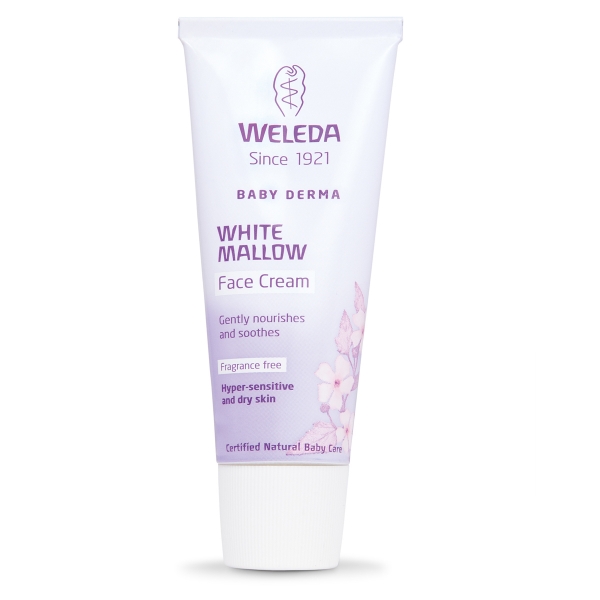What causes diaper rash?
Newborn baby skin is soft, smooth, and pure, which also makes it highly sensitive. Baby’s bottom is exposed to urine and feces, as well as the friction of a moving diaper rubbing the skin, making it prone to infection from bacteria and yeast.
Diaper rash can cause much suffering for babies and parents. This horrible red rash I can range in severity. Both my babies got it. Here are some tips to help you prevent and treat diaper rash.
1. Let baby go diaper free
As often as you can, let your baby’s bottom be free of a diaper. Let the skin air out and feel fresh air. This is also highly advised if you want to practice elimination communication.
2. Change diapers frequently
The less time baby’s bottom is exposed to wet or soiled diapers, the less time the skin has to become irritated and prone to infection or discomfort. Try to keep your baby always in a dry diaper.
3. Use cloth diapers
Cloth diapers are made of natural cotton fibers. There are even organic cloth diapers available. Landfill, aka disposable, diapers can have toxins in them. Some babies have reactions to the colored dyes in the form of allergies or rashes. Furthermore, toxic dioxin is used to bleach the fibers used in disposable diapers. Although, disposable diapers may keep baby’s bottom drier and prevent rashes from developing, they have other toxic ingredients that add risk for the ultra sensitive skin of infants.
What is in a disposable diaper? Baby Center explains:
The outer lining is made of polyethylene film, essentially the same stuff that’s in plastic wrap. The inner lining that touches your baby’s skin is usually made of polypropylene, a common material that’s also found in thermal underwear, among other things…
The absorbent center contains wood pulp and super-absorbent polymers, usually sodium polyacrylate. Introduced in the early 1980s, sodium polyacrylate allowed diapers to become both thinner and more effective at keeping babies dry. This compound can soak up to 30 times its weight in urine. Although sodium polyacrylate is supposed to stay in the core of the diaper, it sometimes leaks through the lining, leaving small transparent crystals on a baby’s skin.
The cartoon characters or other images on the outside of many diapers are made with dyes such as Disperse Blue 106, Disperse Blue 124, Disperse Yellow 3, and Disperse Orange 3.
Scented diapers contain a small amount of perfume between the absorbent core and the outer layers.
4. Use a barrier cream
My daughter was prone to diaper rash, so every time I put a new diaper on her, I used a salve to protect her skin. I didn’t use a diaper cream per se unless she had a rash. For regular changes, I used Country Comfort. This product is all natural and is great for all of baby’s skin, not just the bum. We used this on my son at UCSF when he developed a rash after they bathed him with Johnsons & Johnsons. The nurses were so impressed how quickly it got rid of the rash all over his body.
5. For rashes use Weleda Baby White Mallow Diaper Rash Cream
Sometimes you need an effective diaper rash cream. A really bad rash may make grandma tell you you need the commercial stuff, but stay away from the drug store! According to Good Girl Gone Green, there are 5 toxins commonly found in diaper creams to avoid:
- BHA [EWG score 9] is a synthetic antioxidants used as preservative in products and a known endocrine disruptor and possible carcinogen.
- Fragrance[EWG score 8] commonly represents synthetic chemicals that have been added to products to make them smell appealing. Typically fragrances are associated with allergies, and organ system toxicity.
- Boric acid and sodium borate[EWG score 8] is used as an antimicrobial agent linked to endocrine disruption and reproductive toxicity.
- Petrolatum [EWG score 4] is mineral oil jelly i.e. petroleum jelly and is used as a barrier to lock moisture in the skin. It is a carcinogen and linked to organ system toxicity.
- Parabens- propyl, methyl, ethyl etc [EWG score 7] are the most widely used preservative in cosmetics. They easily penetrate the skin and can mimic estrogen, and can act as a potential hormone system disruptor.
Weleda makes a great, all natural diaper rash cream that you can trust. Weleda Baby White Mallow Diaper Rash Cream relieves and protects. It is safe for sensitive skin.
Effectively relieves and protects from diaper rash
Fragrance free and especially made for highly sensitive skin, this fast-working diaper rash cream, made with nature-identical, pharmaceutical-grade zinc oxide, effectively relieves skin irritation due to diaper rash. It contains 86% organic ingredients, including white mallow extract to soothe sensitive skin, organic coconut oil, which moisturizes with a cooling effect, and sesame seed oil to help heal and nourish skin.
I have long trusted Weleda! Every product I have tried I loved, and I know the companies ethics match mine.

Leave a Reply